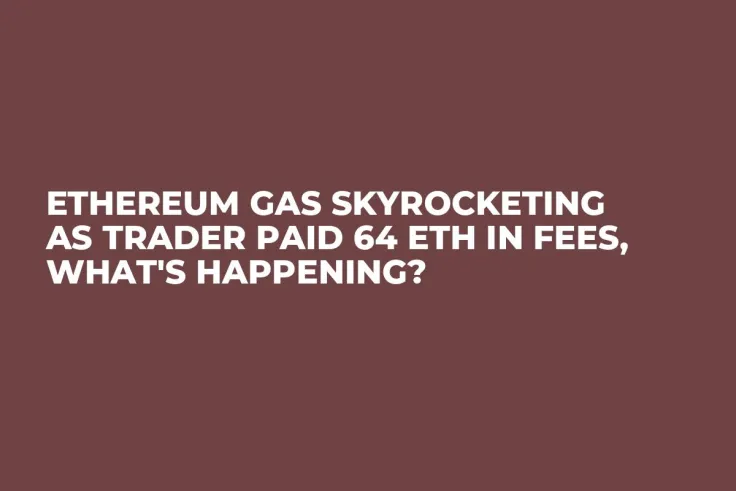
Disclaimer: The opinions expressed by our writers are their own and do not represent the views of U.Today. The financial and market information provided on U.Today is intended for informational purposes only. U.Today is not liable for any financial losses incurred while trading cryptocurrencies. Conduct your own research by contacting financial experts before making any investment decisions. We believe that all content is accurate as of the date of publication, but certain offers mentioned may no longer be available.
The Ethereum (ETH) blockchain network is giving traders enormous concerns at this time as the incidence of skyrocketing gas fees appears to be returning. According to a shared insight from crypto analytics service provider WhaleAlert, one trader paid as much as 64 ETH worth approximately $118,600 at the time of writing in fees for a single transaction.
💸 A fee of 64 #ETH (119,121 USD) has just been paid for a single transaction!https://t.co/3w4UD0AZbw
— Whale Alert (@whale_alert) May 8, 2023
The high gas fee is not a new thing on the Ethereum network; however, it is notably rare since the transition from the proof-of-work (PoW) protocol to proof-of-stake (PoS) through The Merge. While not an immediate dividend, the high gas fee was one of the major considerations for transitioning the protocol to PoS. The rationale is that a different transaction validation method can help in decongesting the network effectively.
With the high gas fees being recorded at the moment, the opposite appears to be the case. The cause may be linked to the massive meme coin hype that stirred intense network activity, causing a clog during the weekend.
This network activity reached a peak when Binance exchange listed PEPE tokens as well as Floki Inu for trading on its platform. This congestion, fueled in part by panic selling by whales and the accompanying soaring prices may reduce the gains accrued by these meme coins, especially for retail traders.
Place of Layer 2 solutions
The skyrocketing price of gas fees on Ethereum contributed to the birthing of innovative Layer 2 protocols like Polygon zkEVM, Arbitrum and Optimism. While the transaction fees on these protocols are a fraction of what it costs on the main Ethereum chain, users still bypass these L2s to carry out transactions on Ethereum.
The rationale for this remains unclear, but with innovative or community-focused protocols building on Ethereum mainnet, it generally becomes quite difficult for L2s to serve the purpose for which they are designed, lowering gas fees and championing scalability.

 Alex Dovbnya
Alex Dovbnya Arman Shirinyan
Arman Shirinyan Caroline Amosun
Caroline Amosun